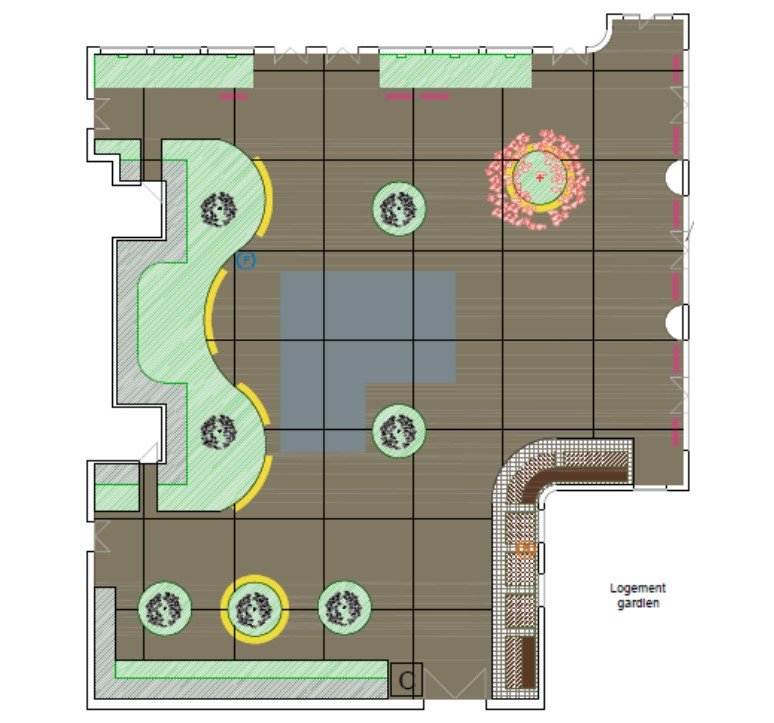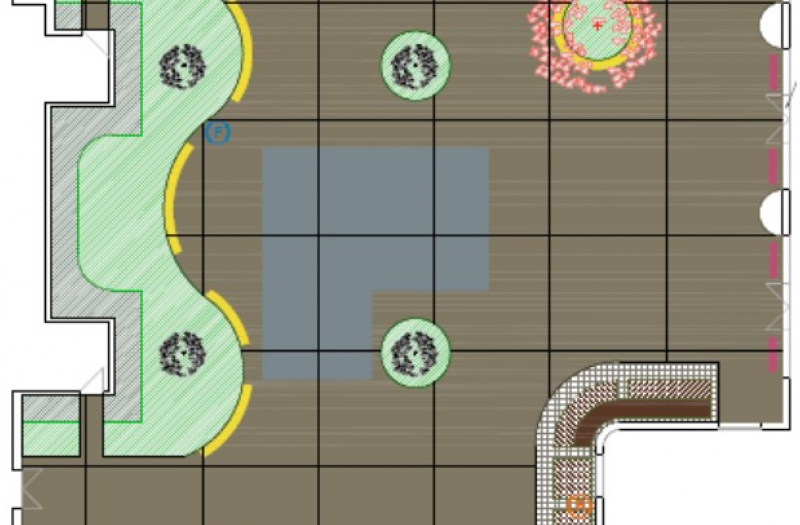Paris Oasis Schoolyards programme

Paris is vulnerable to flooding from the Seine river. It is also a compact mineral city, increasingly subject to the heat island effect. Unpaving, greening and planting trees are thus real challenges and absolute necessities. Fortunately, implanting refreshing pockets of nature on permeabilized soil is made possible by the globally dense and homogeneous repartition of schoolyards. This is just what this project aims at, together with more education- and climate security-oriented purposes.The “Oasis” Schoolyards programme takes place in the wider framework of Paris’ Resilience Strategy. As such, it also attempts to meet the local requirements of socio-spatial inclusion, public environmental health and climate change mitigation.
- Reduce the local heat island effect
- Provide pupils with a healthy and stimulating learning environment
- Educate residents to risk culture on climate change
- Make refuges of freshness available to the most vulnerable populations
- Create numerous meeting spaces to spur conviviality and solidarity
- By using a light-coloured, low carbon footprint substrate with a modular porosity on schoolyards grounds, the latter are expected to be much cooler.
- The ground’s cooling effect will be enhanced with the additional use of rainwater, by ...
|
Challenges /goals |
Enhancing sustainable urbanisation |
Restoring ecosystems and their functions |
Developing climate change mitigation |
Developing climate change adaptation; improving risk management and resilience |
|
Challenge 1 : Air/ambient quality (to reduce UHI effect and/or to improve air/ambient quality) |
Improve air quality. |
Reducing temperature at meso or micro scale. |
||
|
Challenge 2 : Climate resilience |
Increase population & infrastructures protected by NbS. |
Reduce droughtrisk. Reduce flood risk. Reduce risk of damages from drought. |
||
|
Challenge 3 : Water management |
Improve water quality. |
Increase infiltration / Water storage. Reduce load to sewer system. Reduce run-off. Flood peak reduction. |
||
|
Challenge 4 : Public health and well-being |
Increase well-being. Provision of health benefits. Increase accessibility to green open spaces. Changing image of the urban environment. |
Carbon sequestration and storage. |
|
Challenge 5 : Green space management (including enhancing/ conserving urban biodiversity) |
Increase Biodiversity. Increase achievements of biodiversity targets. |
|||
|
Challenge 6 : Social justice and social cohesion |
Increase social interaction Increase communities’ sense of ownership. Social inclusion |
|||
|
Challenge 7 : Participatory Planning and Governance |
Social learning about location & importance of NbS. Increase stakeholder awareness & knowledge about NbS. Increase awareness of NbS solution & their effectiveness and co benefits. |
|||
|
Challenge 8 : Urban regeneration |
Increase amount of green open spaces for residents. |
Increased cultural richness and biodiversity |
The results of this programme can be transposed to cities who want to:
- Adapt cities to climate change by an urban and natural development:
- Choose urban development considering NbS for social and climate challenges o Anticipate the evolution of urban infrastructure: consider NbS in face of repeated heat waves
- Organize a participative management
Process:
- Integrated vision in response to various urban vulnerabilities
- Inclusive approach of residents, public institutions and private sector
- Share ideas and innovations from their cities
Objectives:
- Ability to think systemically in order to multiply the benefits
- Flexibility: natural and modular spaces and facilities capable of accommodating uses
The Municipality of Paris funds the project.
Sebastien Maire sebastien.maire@paris.fr
Fompeyrine, Noemie noemie.fompeyrine@paris.fr



